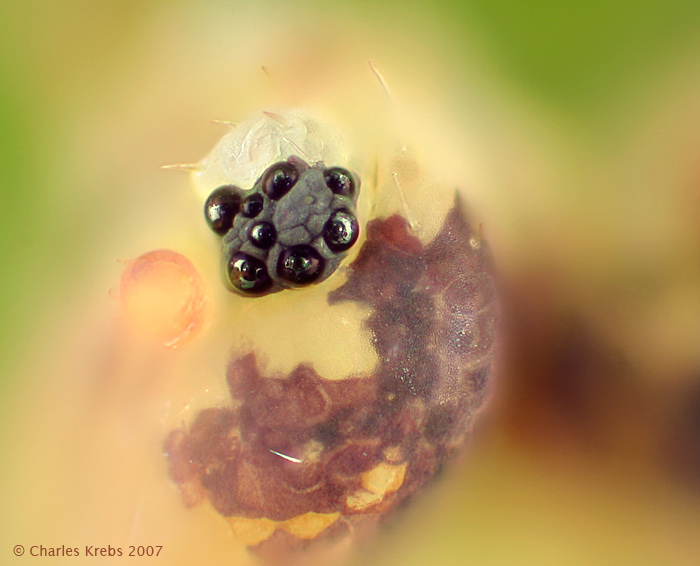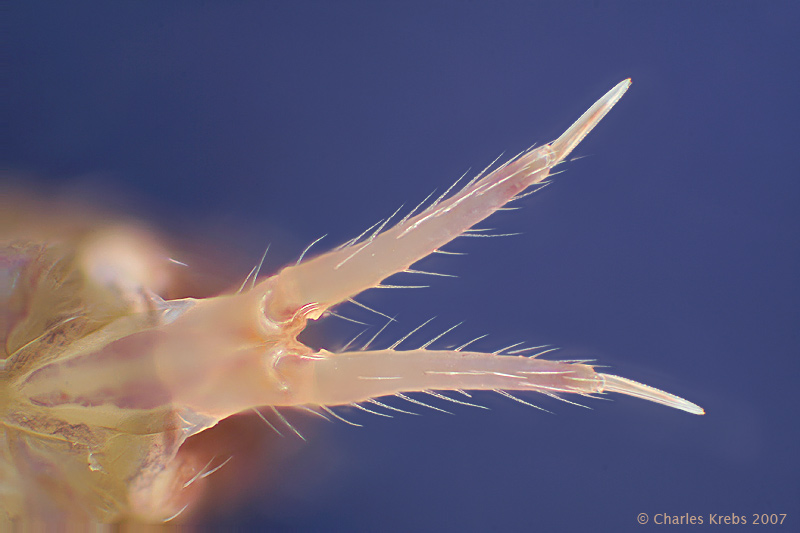I believe the correct ID for this particular springtail is Dicyrtomina ornata.



Moderators: rjlittlefield, ChrisR, Chris S., Pau



Ah, terminology, always a challenge -- can't live with it, can't live without it!Ken,
You're not the only person to waffle about how to describe those eyes. At http://delta-intkey.com/britin/ord/www/collembo.htm, Watson and Dallwitz describe the Collembola as: "Compound eyes present and well developed (but composed of eight or fewer omitidia), or vestigial or absent. Ocelli 0–16 (the distinction between compound eyes and ocelli here being indistinct)."
http://www.cals.ncsu.edu/course/ent425/ ... ollem.html provides a similar description.
Other authors say that the collembola do not have compound eyes at all, e.g. http://entomology.unl.edu/lgh/insectid/ ... rygota.htm and http://www.cals.ncsu.edu/course/ent425/ ... photo.html. (The latter makes the additional refinement of calling the units "lateral ocelli = stemmata", and amusingly enough is inconsistent with the description at the closely related site linked in the previous paragraph.)
Obviously the beasts have what they have, and I doubt that the various authorities would disagree about the beasts themselves.
But in these on-the-edge cases, considerable confusion can arise in the descriptions, when one author for example decides to call the structure a collection of ocelli, and somebody else looking at the beast or a picture of one says "nope, can't be that -- this here is clearly a compound eye".



Um, yeah, you're way over limit for the day, but I guess as followup response to a question in the same topic we can cut you a little slack. Take a break tomorrow, OK? (Says Rik, the admin...)Charles Krebs wrote:OK... I know I'm over limit for today... but if you are going to try to analyze the reflections in the eyes this image is important. It's a top view of this critter, and it provides a perspective on the location of the eyes, and how they could be picking up reflections from the body, head, and antenna.